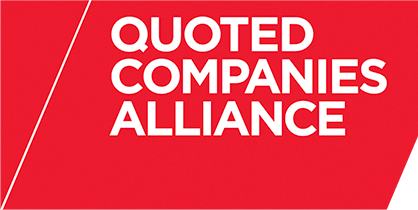IFRS 16 Leases replaces IAS 17, SIC 15, SIC 27 and IFRIC 4 and sets out the principles for the recognition, measurement, presentation and disclosure of leases by lessors and lessees. The new standard applies to accounting periods beginning on or after 1 January 2019 but early application is permitted (once it has been endorsed for use in the EU), provided that IFRS 15 Revenue from Contracts with Customers is also applied from the same date (See our article in March 2017). At the time of writing this article, IFRS 16 is expected to be endorsed for use in the EU in the fourth quarter of 2017.
Impact on lessees
The adoption of IFRS 16 will have a significant effect on lessees as, subject to two minor exceptions, it will bring all leases within its scope on to the balance sheet. This will be achieved through recognising an asset for the right of use of the leased item and a liability for the future payments under the lease.
For leases currently classified as operating leases, the single amount included within operating expenses as rental costs would be split between the amortisation of the “right of use” asset in operating expenses and an interest component arising from the treatment of the liability for the future lease payments. This will have a significant effect on the common performance metric Earnings Before Interest, Tax, Depreciation and Amortisation (EBITDA). It will also result in a front-loaded expense profile rather than the current straight-line expense profile.
Whilst total cash flows will, of course, remain unchanged under the revised accounting, the new standard will result in a change in the analysis included in the cash flow statement. Under the revised requirements the principal repayments on the lease liability will be included in financing and interest payments will be included in operating or financing, whereas operating lease cash flows are currently included entirely in those arising from operating activities.
Under IFRS 16, the lease liability will initially be recognised at the present value of the expected lease payments, including non-cancellable lease payments and certain optional payments, if the lessee is reasonably certain to exercise the option. Payments that are contingent on uncertain future events, such as revenues generated by a retail store, are excluded from the present value calculation.
The lease payments are discounted using the interest rate implicit in the lease or, if that rate cannot be readily determined, the lessee should use its incremental borrowing rate.
The right of use asset is measured at the initial amount of the lease liability, adjusted for lease payments made at or before the commencement date, lease incentives received, initial direct costs incurred by the lessee and estimated decommissioning costs.
Subsequently, the lessee will measure the right of use asset similarly to other non-financial assets and lease liabilities similarly to other financial liabilities.
As noted above, there are two minor exceptions from the requirement to recognise leases on the balance sheet. These are:
- Short-term leases – those that have a lease term of 12 months or less at the commencement date; and
- Leases for which the underlying asset is of low value – judged on the value of the asset when it was new. This exemption is intended to remove items such as laptop computers from the scope of the standard’s requirement. Such leases will continue to be recognised as operating expenses.
Impact on lessors
The potential effect on lessors is far less pronounced as IFRS 16 substantially carries forward the lessor accounting requirements in IAS 17. A lessor continues to classify its leases as operating leases or finance leases, and to account for those two types of leases differently.
Sale and leaseback
The IFRS 15 requirements for determining when a performance obligation is satisfied are used to determine whether the transfer of an asset is accounted for as a sale of that asset. If it does not satisfy these requirements, it is accounted for as a financing transaction by both the seller-lessee and the buyer-lessor.
Disclosures
IFRS 16 requires enhanced disclosures by both lessees and lessors, which include a mix of both qualitative and quantitative requirements. The disclosure requirements cover the nature of leases, and details of any right of use assets and lease liabilities.
Transitional provisions
There are various transitional provisions for both lessees and lessors, many of which are based on the date of initial application which, for a December year-end company not adopting the standard early, would be 1 January 2019. For lessees they include adopting a fully retrospective approach or a modified retrospective approach. Broadly, the latter option would result in comparative information being presented under the previous accounting requirements and the current year information being presented under IFRS 16.
As with IFRS 9 and IFRS 15, the requirements in IFRS 16 could result in major changes to a company’s financial reporting so early planning for a smooth transition is vital and will allow boards to assess the impact and communicate with investors accordingly.
This article was written by Jonathan Compton, Director at BDO LLP and a member of the QCA Financial Reporting Expert Group. For more information, please contact Jonathan Compton.

